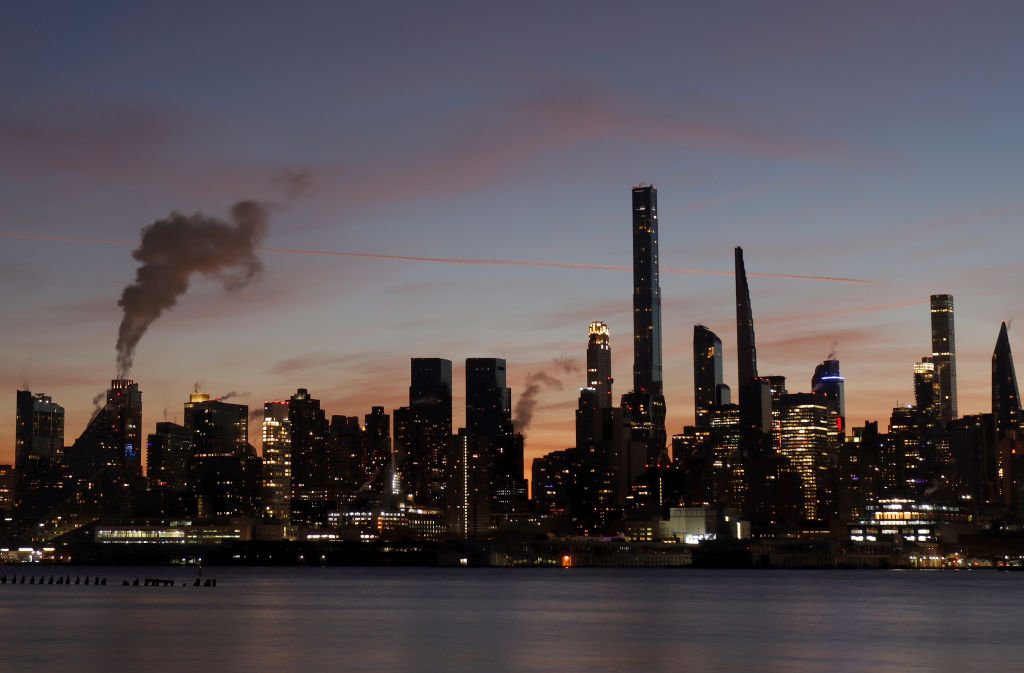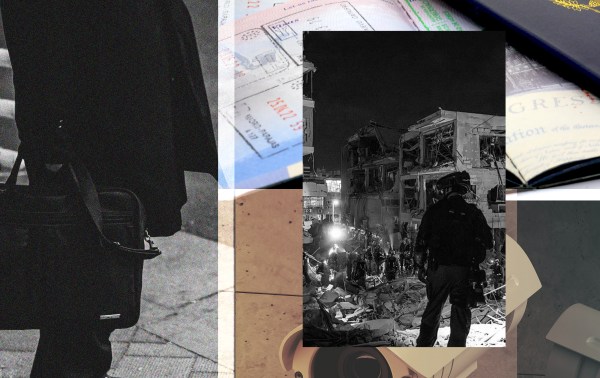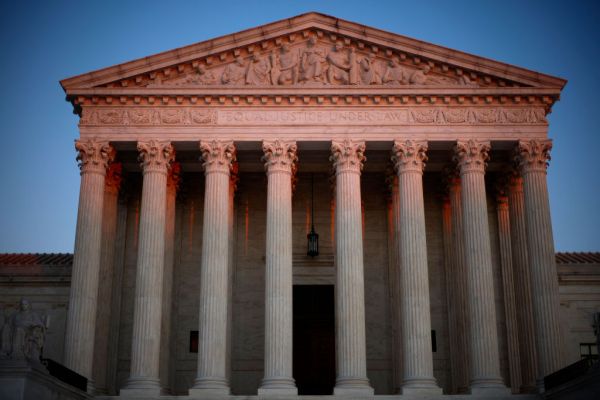After every election, we are reminded that Republicans don’t do well in urban areas, but we rarely ask whether conservatism itself fares as badly.
In the recent midterms, exit polls showed a shrinking Democratic urban advantage, GOP governors grew their vote share in their most populous cities, and metro area voters from New York to Florida were surprisingly friendly to Republicans. This was not because the GOP grew its ranks in these places, but because the candidates’ ideas resonated with voters.
There are more people than one might think in metropolitan America who hold mainstream center-right views on a lot of issues. Failing to understand these “metro cons” is a big part of why Republican Party leaders have embraced their own “demography is destiny” approach to exurban and rural America—and cost themselves a lot of voters in the process.
Conventional wisdom on the left and right holds that urban life and conservatism are fundamentally at odds. That conventional wisdom is wrong, both demographically and philosophically. Let’s take each in turn. But, first, some recent history.
Not long ago, conservatism was more urban. New York City was the epicenter of conservatism’s intellectual ferment in the second half of the 20th century, home to many of its prominent theorists and authors. Conservatives generated ideas for reforming everything from urban schools to public housing to policing to welfare, and they produced reform-minded Republican mayors to implement them in the 1990s. Half of the mayors in America’s 20 largest cities were Republicans in 1995.
By 2020, only two were. Between the 1990s era of urban domestic policy reforms and Donald Trump’s (in)famous “American carnage” inaugural address in 2017, urban counties grew considerably more Democratic and rural areas more Republican, according to Pew. Longitudinal studies show that political affiliation is a good predictor of whether people will leave urban areas for less dense areas (Republicans) or vice versa (Democrats). Other studies find that conservatives and liberals are sensitive to “ambient clues” about the ideological makeup of communities. Liberals really do consider fair trade coffee shops and hybrid cars as signals of “their people,” just as conservatives do with gun shops and Walmarts.
Thus the “urban-rural divide” narrative took hold in political discourse despite the fact that a majority of Americans live in metro areas. By the aughts and 2010s, Republican leaders basically chose to own rather than buck that trend and prioritized non-urban, mostly white voters as a winning political coalition for the foreseeable future. The presidential races of 2016 and 2020 only reinforced the point as urban areas grow more Democratic and Republicans dominated in whiter, rural areas, as Sean Trende has chronicled.
Don’t these trends prove that urbanization and conservatism are at odds? Not really.
For one thing, Democratic gains in urban counties and Republican growth in rural areas the past 30 years come mostly from leaners, not solid partisans. Political leaners are more complex, less ideological, and more likely to depart from party orthodoxy. The urban-rural narrative also overlooks the growing Republican advantage over the past 40 years in smaller metros that, taken together, rival the Democrats’ advantage in large metro areas. Smaller metro areas are still urbanized in important ways and distinctively non-rural.
There are more self-described conservatives in metro areas than you hear about. Twenty-seven percent of conservatives live in a large city or its suburbs, and another 31 percent live in small metro areas. Liberals dominate core cities and Republicans small towns, but 48 percent of conservatives and 58 percent of liberals live in small cities and suburbs.
The nature of metro America renders the “urban-rural divide” more fiction than fact. The more interesting divides are within America’s metro areas—comprised of cities and suburbs—where a majority of Americans live. Many of these people are metros cons. They may not all vote Republican, but they care about issues that conservatives champion. They are comfortable with the diversity, openness, and dynamism of competitive commercial life on the one hand, while embracing conventional—even traditional—values and practices associated with conservatism on the other. They encompass churchgoing jet setters in the suburbs of large cities, hardscrabble shop owners and immigrants in inner-ring suburbs, and bourgeois city dwellers.
Roughly three-quarters of metro area residents are ideological “heartlanders”—that is, people who are politically moderate or lean right or left compared to “very” conservative or “very” liberal people. Like heartlanders everywhere, they are more likely than committed partisans to think people with strong political views are intolerant. Majorities of metro heartlanders lean right and left on hot-button issues such as immigration but do not feel as strongly about such issues as the committed partisans to their right and left.
When asked about traditional American values such as whether people who work hard can get what they want, a majority of blacks and Hispanics in metro areas hold the same optimistic view as conservatives, in contrast to the majority of liberals who do not believe hard work matters. Blacks and Hispanics are more likely than conservatives to say America’s economy reward powerful interests, but less likely by similar margins than liberals. About half of Hispanics in large metro areas oppose affirmative action in college admissions, compared with only one-quarter of liberals, and blacks in big cities view immigration more in line with urban conservative voters than progressives.
The shares of urban and suburban residents who attend religious services are similar to the national average. A majority of them believe that religious organizations make a positive contribution to their local communities, and more than two-thirds feel a positive connection to religion through their ethnic or cultural heritage, even if they are not personally religious. Compared to the majority of big city liberals who find religious people intolerant, more than half of big city blacks and conservatives do not.
About 1 in 3 residents in large and small cities rate crime as their top local news issue, consistent with how moderates and conservatives rate the issue, compared to 1 in 5 liberals. Big city residents support reduced police funding more than people elsewhere, reflecting their generally liberal tendencies, and yet two-thirds of them support increased police patrols. In fact, they are more likely to “strongly” support increased patrols than people living elsewhere. Views of police funding are largely symbolic. When it comes to policing itself, most urban residents hold conventional, if not conservative, views.
School choice is another interesting indicator of conservative values. As my American Enterprise Institute colleague Nat Malkus has shown, parents in heavily Democratic districts were twice as likely as those in Republican districts to unenroll their children during the pandemic because of draconian school closure policies. This should not be that surprising. Charter schools have long been most popular in left-leaning (minority) urban areas, despite the credal opposition to them by the progressive (mostly white) establishment.
The point here is not that there are loads of closeted diehard conservatives in urban areas. It is rather that the bulk of people in urban areas are not very progressive, and often more conservative than progressive. The cultural, ideological, and political trajectory of the left in urban America does not reflect the hearts and minds of much of urban America.
None of the foregoing is intended to minimize the very real geographic segregation that has occurred between people with conservative and progressive values, nor to minimize the way our electoral system reinforces those divides. But by focusing too much on voting behavior and too narrowly on distinct cultural preferences, political leaders are missing an opportunity to think anew about demographic and policy realities of metro America. Conservatism as a political movement today is in no shape to influence metro areas in a significant way, but that says more about the movement itself than the applicability of some of its underlying priorities and principles to metro life and policy.
What are some of those principles?
First, the conservative approach to individualism, which finds its fullest expression in urban areas where opportunities for self-determination abound, is well-suited to urban life. Until recently, conservatives believed in a healthy form of individualism—as in the kind that is opposed to collectivism in its commitment to the inherent dignity in each person. The Declaration of Independence’s “pursuit of happiness” is not a collective concept. It is a right enjoyed by individuals. It is an achievement, as Larry Siedentop’s Inventing the Individual chronicles, of centuries of the Judeo-Christian notion of dignity infusing political and legal arrangements in Western societies. Conservatives have long defended individual sovereignty against the collectivizing goals of progressivism.
Conservatives need to reject the illiberal turn taken by many nationalist conservatives and reclaim a healthy approach to the individual, especially if they hope to have cultural and political influence in urban life in America. There will always be self-expression in urban areas that uncomfortably pushes accepted norms, but this should be seen as a price to pay for a rich environment that affords the widest range of pathways for the pursuit of happiness.
Second, conservatism has long been friendlier than progressivism to the ideas of earned success and upward mobility on which so much of urban life is built. Cities are historically places where people go to fulfill their aspirations. It is impossible to separate the dynamism of cities from what we understand about the American Dream. Nearly 60 percent of blacks and 63 percent of Hispanics living in large metro areas believe that “if people work hard, they almost always get what they want.” One of the sharpest ideological divides between conservatives and progressives is their view on whether hard work helps people move up the socioeconomic ladder. The conservative view is the more urban view, odd as that may sound.
The major domestic policy reforms of the 1990s, which were urban to the core—from the creation of charter schools to the first school voucher programs to welfare reform and public housing reform—were an expression of the conservative view of opportunity. They were a direct attack on the failing Great Society approach to redistribution and inequality, and at their heart was the notion that individual efforts to work and achieve goals should be central to public policy.
Third, the diversity and variety of urban life fits well within a conservative worldview, properly understood. This may sound odd given the nationalist voices in today’s conservative movement, but inherent in the conservative commitment to incremental change is an acknowledgement of the complexity of human society. The only universal aspects of human nature are its imperfectability and unalienable rights. Everything else is subject to variation, which is why ideological uniformity is so dangerous. Progressives tend toward universalism, however much they mask it in their libertarianism on some social issues, while conservatives historically distrust ideological monocultures as a principle. Conservatism as a disposition is better suited than progressivism to what cities need: allowing people to live their lives in a competitive environment with a variety of school types, varied housing options, different neighborhoods for different tastes, and radically different views on cultural issues living side-by-side in peace. Metro cons need to reimagine what that means for political strategy and governance in urban areas, and resist the drift in some quarters on the right toward an ideological monoculture of its own.
Fourth, the conservative approach to federalism and civil society are better suited to urban America’s needs today than what the left offers. Federalism helps hold a diverse society together. And a truly civil society, rooted in the free association of people for the sake of the greater civic good, cannot be imposed from above. Together, they (should) allow for political competition—both between the state and the city and between adjoining jurisdictions—that improves a metro region. Political competition between municipalities within a metro area has been shown to be good economically for the region as a whole. And cities with geographic representation and city managers are less likely to adopt ideologically charged policies and more likely to equitably distribute resources than those with at-large council members and overly powerful mayors. The conservative inclination to allow people at the local level to sort their affairs for themselves turns out to work well in urban areas. And if the pandemic and midterms have taught us anything about metro area voters, it is that they are tiring of ideological overlords and prefer good governance that gets the basics right in the neighborhoods where they live.
These are not new ideas. Conservatism as a set of principles and practices has a long, often unacknowledged (by conservatives themselves), place in the development of Western urban life. Metro cons have been around for centuries, actually, because traditionalism and urban commercialism have coexisted for ages. Famously tolerant 17th century Amsterdam blended the Dutch Republic’s far-flung commercial ambitions from Asia to the Caribbean with a pious and missionary-minded Calvinism. The British enlightenment produced defenders of both urbanized commercial life and the associational life that makes a moral society possible. David Hume’s observation that “people flock to cities” in a commercial society and maintain social cohesion by forming “particular clubs and societies … everywhere” represents how he, Adam Smith, and many contemporaries understood a flourishing society. The Dutch and British examples are but two of many in which the vitality (and messiness) of urban life and a deep commitment to the sources of moral order not only coexisted but reinforced one another.
With a little imagination and a clearer grasp of how policy preferences and demographics hang together, conservatives can once again draw on this history to regain political footholds in metro areas. Too much analysis of the deurbanization of the political right in America has a strong “demography-is-destiny” whiff to it, but recent history shows that ideas can drive important changes. Former Indianapolis mayor and New York City deputy mayor Stephen Goldsmith has said that it was the ideas developed by center-right public intellectuals for reforming schools, welfare, and other urban policies in the 1980s and 1990s that drew Republicans like him into public office in urban areas (full disclosure: I worked on Goldsmith’s staff for part of his second term in Indianapolis). The reform-mindedness of the conservative movement attracted likeminded political leaders. Myriad articles, papers, and speeches about and by those reformers from that era, available online, seem to confirm Goldsmith’s theory.
The conservative movement shoulders a good bit of the blame for the faulty conventional wisdom for doubling down on strategies that favor older, whiter, and more rural voters. Demography does not have to be destiny if conservatives have it in them once again to reimagine what principled policy looks like in the metro areas where most Americans live and work.






Please note that we at The Dispatch hold ourselves, our work, and our commenters to a higher standard than other places on the internet. We welcome comments that foster genuine debate or discussion—including comments critical of us or our work—but responses that include ad hominem attacks on fellow Dispatch members or are intended to stoke fear and anger may be moderated.
With your membership, you only have the ability to comment on The Morning Dispatch articles. Consider upgrading to join the conversation everywhere.